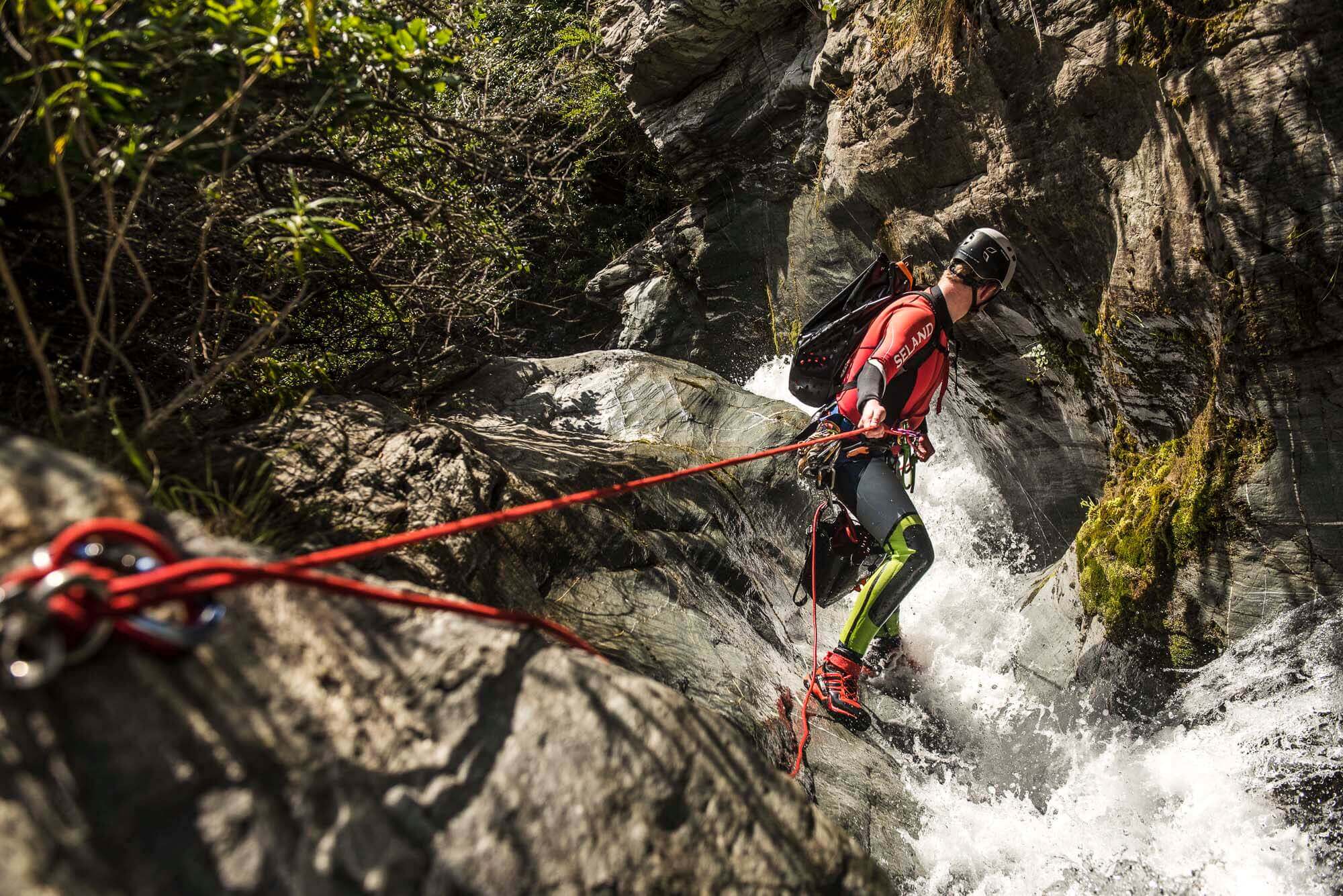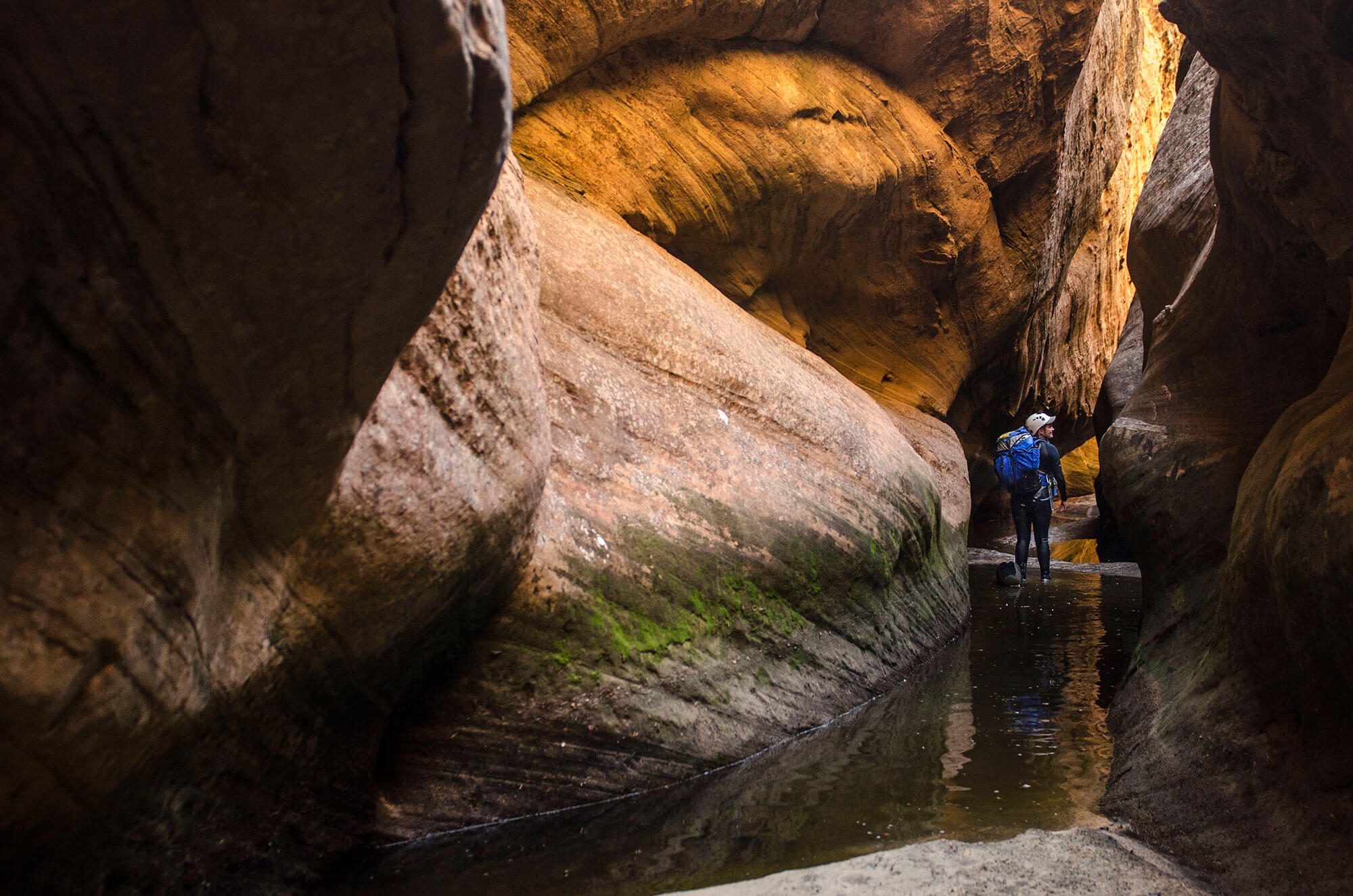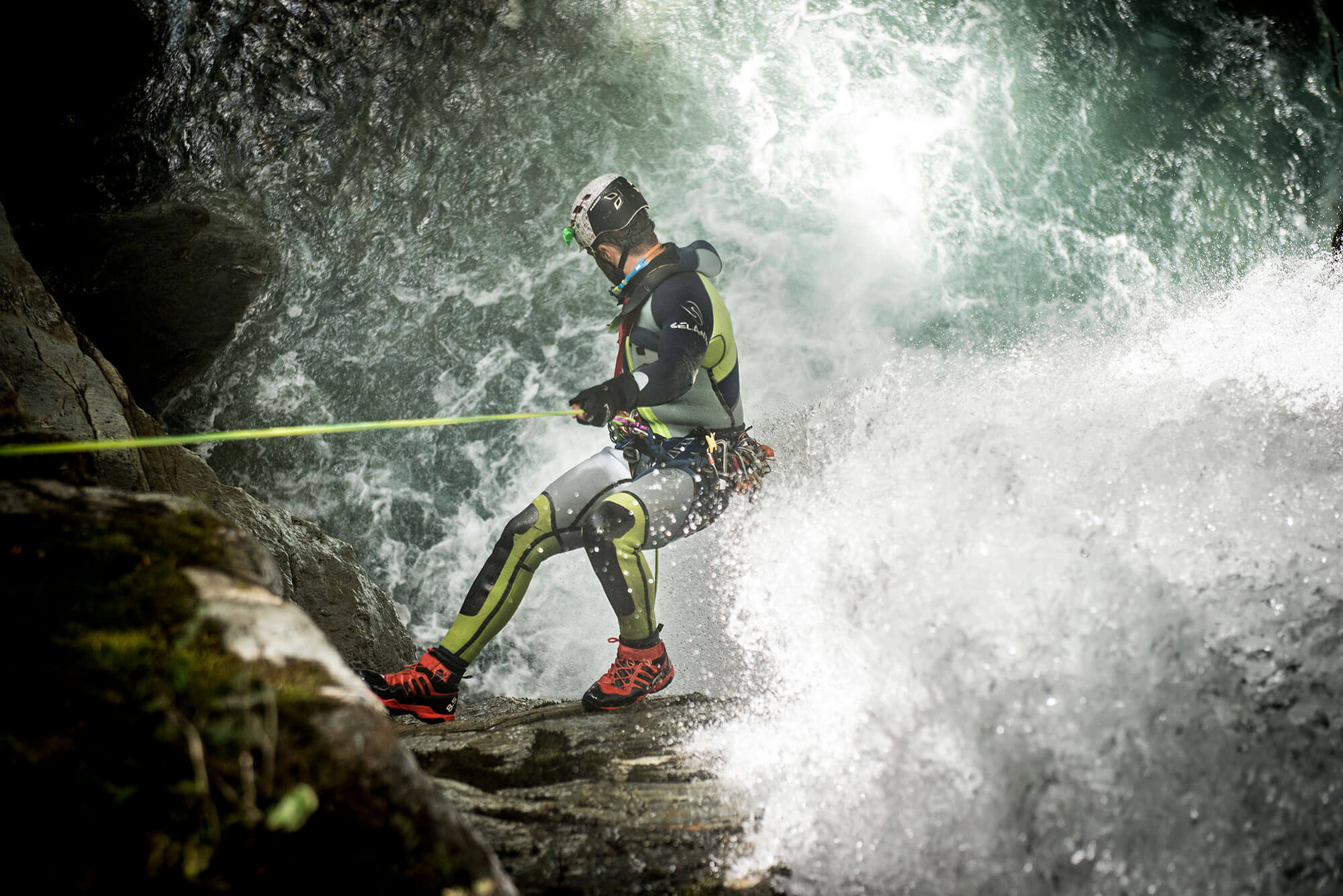“What’s the difference between Canyoning or Canyoneering?”
I know, I feel you: we get these these questions every time someone asks what you do on your weekends: “What is canyoning?” or “What is the difference between canyoning and canyoneering?”. For as much as we love our sport, many people still don’t know about it so it’s in our interest to give them insight to the activity and maybe help them join our worldwide canyoning community. Plus, it makes you sound even cooler talking about those big waterfalls, jumps and slides we find in the canyon!
Canyoning or Canyoneering?
As we covered on this article about the definition of the sport, canyoning is an adventure sport that involves the descent of a watercourse (stream, creek, river) by using techniques that include rappelling (also called “abseiling” in some countries), swimming, jumping, sliding and down climbing. But what are the main differences between canyoning and canyoneering?
Well, there is no difference: both “Canyoning” and “Canyoneering” refer to the same thing! The terminology use is purely a cultural thing: “Canyoning” is the most common term around the world, and “Canyoneering” is most popular within the United States (looking at you, Utah folks!).

Even inside the community, some will claim the difference lies between descending water-filled “Wet canyons” (Canyoning) and water-deprived “Dry Canyons” (Canyoneering), but if we adhere to the definition of canyoning, the objective of both is still the same. That is not to say there aren’t differences between Wet and Dry canyons. We can look at these differences more in depth in the following section.
Wet and Dry Canyons
The presence of water will affect the technical approaches to getting down a canyon. An abundance of water may create dangerous water features while the absence of water can bring inescapable “potholes”. The skills and equipment needed between these two types of canyons can differ so greatly that the sports’ similarities can become unrecognisable, hence some opt for the split use of the terms canyoning and canyoneering.
Dry canyons
Dry canyons are most often found in desert-like, arid areas such as the ones found in Arizona, Utah or Jordan. These canyons may have little or no water within them, but dry canyons are not always dry. They are created by running water, except in this case the water runs very rarely. If the shape of the canyon allows the formation of pools, these pools may dry up creating steep-sided basins called “potholes”. Potholes and narrow passages may require us to have solid rock climbing techniques like stemming or aid climbing. This can result in very technical moves not suitable for beginners.

Wet canyons
In contrast, Wet canyons will have running water through them most of the time. They usually occur in mountainous regions with precipitation. Moving water increases our exposure to hazards such as hypothermia and drowning therefore careful assessment of the obstacles and canyoning ratings is necessary. We will need to be more adept at negotiating both vertical and horizontal water movements, and we’ll also need different clothing and equipment like thick wetsuits, gloves, etc.

In summary:
Canyoning and canyoneering refer to the same thing, and it’s a matter of preference to how you will refer to the sport: Canyoning is an internationally-used term so that’s how V7 Academy will always call our sport. Feel free to call it the way you want it, as long as you are having fun and enjoying it safely! You can learn more about the sport on our free online course.



